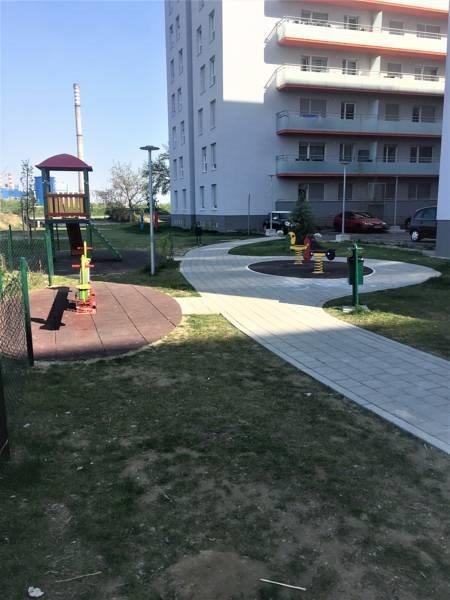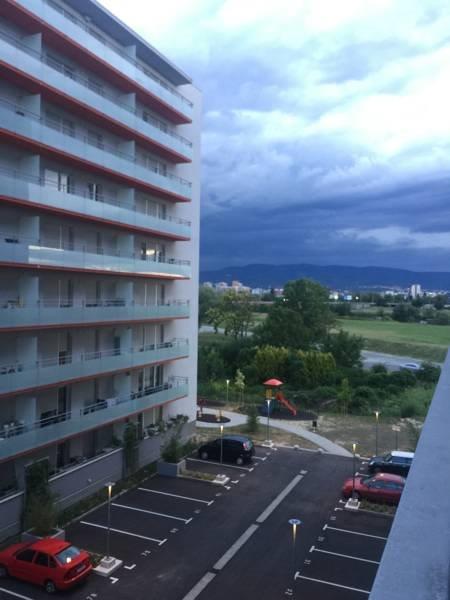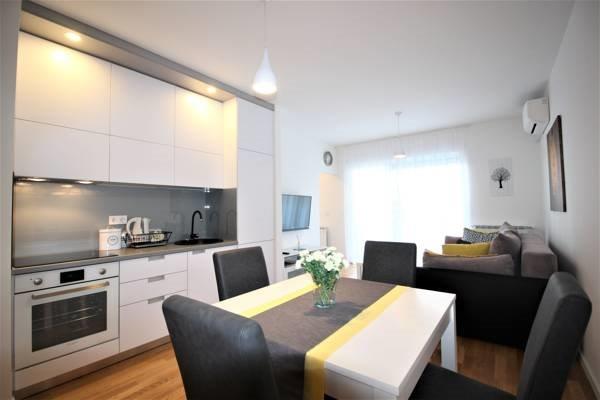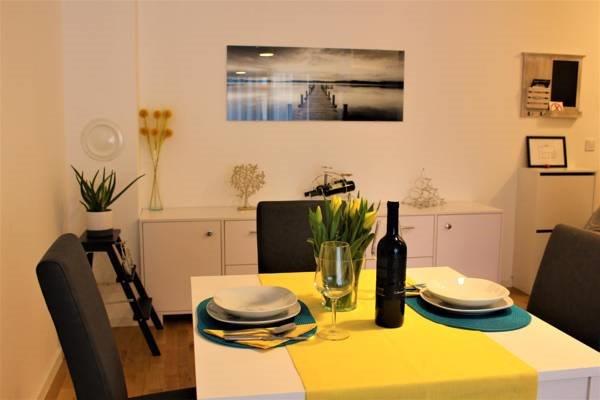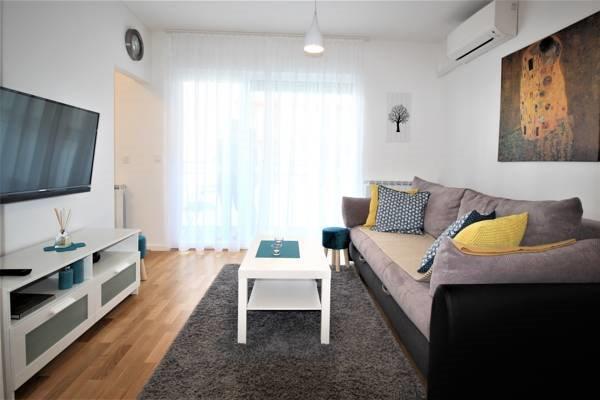General
Apartment Mirjana is located in Zagreb in quiet area. New apartment with one bedroom, modern kitchen and living room. Perfectly designed for young couple with children. With parking place in hidden garage you can visit town without looking for weather forecast.
Just 15 min from center away with public transport. Next to apartment is supermarket and bus station and metro.
Check-in time
From 14.00Check-out time
Before 9.00Facilities
- 1 bedroom
- 3. floor
- Air Condition
- Balcony
- Kitchen
- Living room
- Refrigerator with freezer
- Separate entrance
- Toilet
- TV
- Washing machine
- WiFi
Internet
Free wi-fi
Parking
Free parking
Zagreb
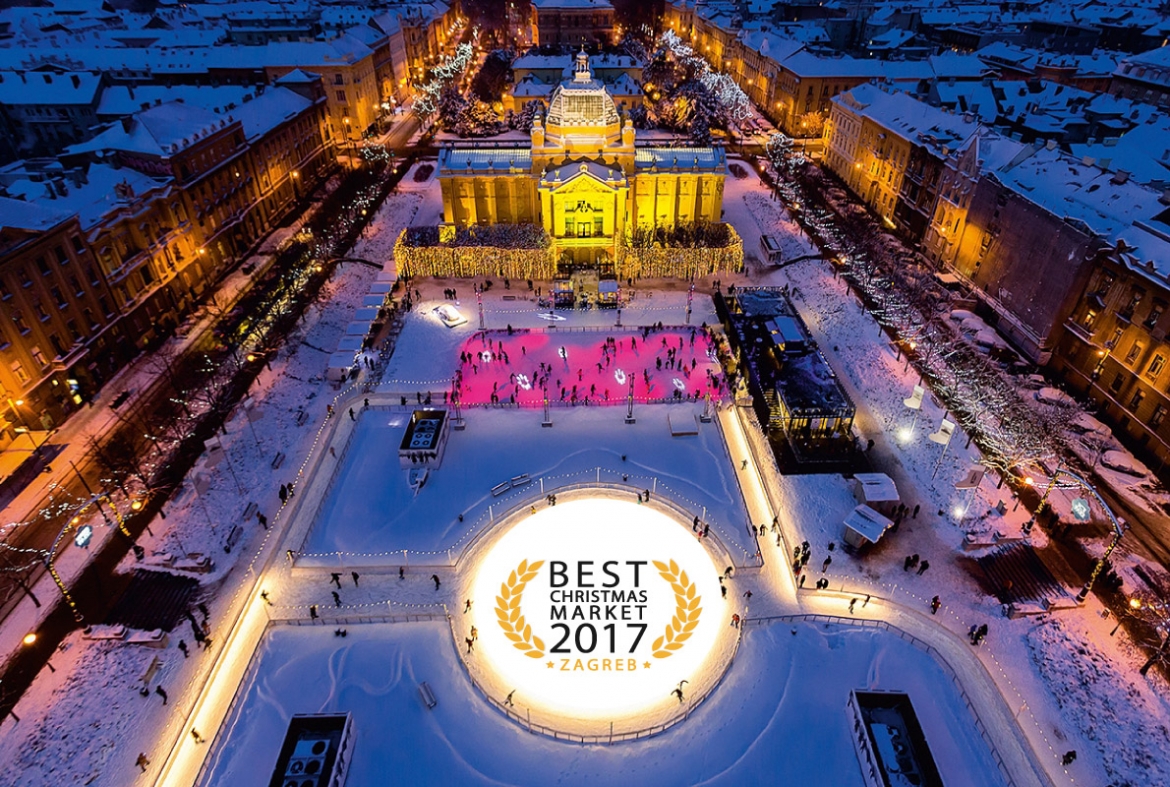 Zagreb – city with a million hearts The city of Zagreb, capital of Croatia, on the historic and political threshold between East and West, illustrates both the continental and Mediterranean spirit of the nation it spearheads. Zagreb is the cultural, scientific, economic, political and administrative centre of the Republic of Croatia, and is home to
Zagreb – city with a million hearts The city of Zagreb, capital of Croatia, on the historic and political threshold between East and West, illustrates both the continental and Mediterranean spirit of the nation it spearheads. Zagreb is the cultural, scientific, economic, political and administrative centre of the Republic of Croatia, and is home to Sports & nature
Blue Zagreb White Zagreb
Blue is the colour of Zagreb. It is found on the coat of arms, on city trams, buses and the funicular, while the shirts of its sportsmen are also the same colour. The people of Zagreb have always been passionate about sport, especially football. Dinamo, the football club with the most trophies in Croatia, also has blue as its team colour. Centres for recreation and professional sports can be found all around the city. The Cibona Basketball Club plays in a sports hall named after the legendary player Dražen Petrović. In addition, what used to be a branch of the Sava river is now the Jarun Recreational Sports Centre, built for the 1987 University Games.Nightlife info
Lounge culture
Zagreb can be described as a city with the biggest lounge. The moment the sun appears in the sky in spring, restaurant, café and coffeehouse terraces open for custom. Streets become promenades, places to get a cup of coffee, relax or have a business meeting. A combination of Mediterranean cordiality and northern business sense make any visitor feel welcome. The traditional International Folklore Festival, the global festival of street performers Cest is d’Best, outdoor summer concerts on Zrinjevac, St. Martin’s Day and many other open-air events increase the feeling of communality.Culture and history info
The two hills of Zagreb
Archeological discoveries dating back to around 35,000 B.C. during the Stone Age have been discovered in the vicinity of present-day Zagreb, while later finds show evidence of the Illyrians’ arrival in this part of Europe. The Celts later moved in from the far north, presumably in the fourth century B.C.. They were succeeded by the Romans who built a large urban centre called Andautonia and whose remains have been preserved in the archeological park of Ščitarjevo. Zagreb as we know it today, which is to say its historical centre, dates back to the Middle Ages, and the settlements on two hills: secular Gradec, today known as the Upper Town; and ecclesiastical Kaptol. The first written record of Zagreb dates back to 1094 when the Hungarian king Ladislav established the Kaptol diocese on his way to the Adriatic Sea. The Zagreb Cathedral still dominates the skyline with its neo-Gothic style, while the Renaissance walls surrounding it are rare preserved examples of their kind in this part of Europe.Read more


